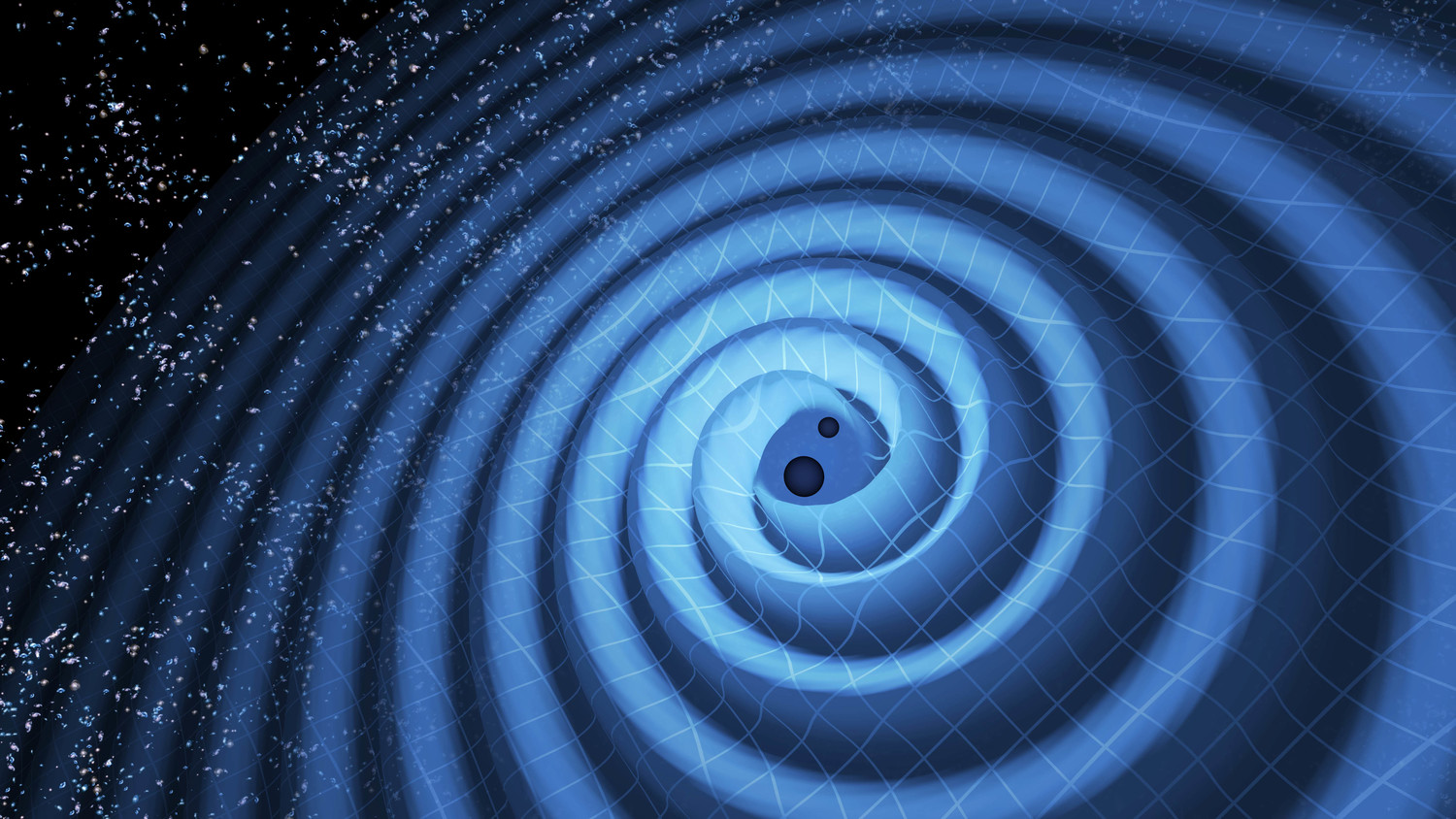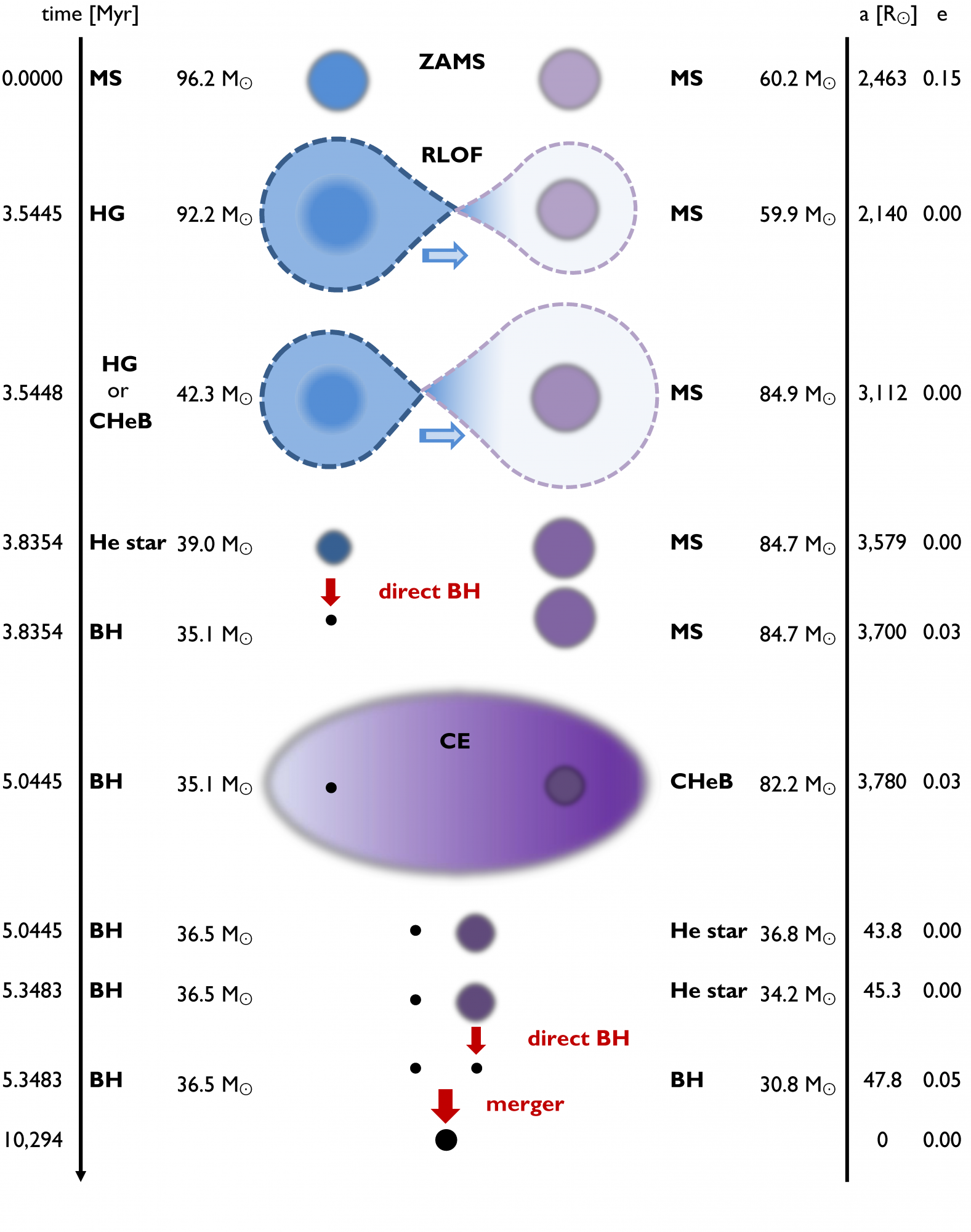 The spiral dance of doomed black Holes. Artwork credit: LIGO/T. Pyle.
The spiral dance of doomed black Holes. Artwork credit: LIGO/T. Pyle.
by Benjamin Recchie
The researchers of the Laser Interferometer Gravitational-wave Observatory (LIGO) experiment were elated to announce last year that they had detected gravitational waves directly for the first time. Albert Einstein had first predicted them in 1915, as part of his theory of general relativity, but it took a century for scientists to build instruments sensitive enough to directly detect these ripples in the fabric of space. But the LIGO researchers weren’t just excited to see Einstein proved correct again—they were eager to use gravitational waves to explore open questions in astrophysics and cosmology. That’s where Daniel Holz, associate professor of physics and of astronomy and astrophysics, comes in.
Gravitational waves are caused when an object—any object—accelerates in space, although the only thing massive enough to create waves strong enough to detect are extreme sources such as pairs of massive black holes, each the dead remnant of a star many times the mass of our sun, orbiting about each other. As the black holes circle, they radiate away their energy in the form of waves of gravity, like ripples emanating from a disturbance in water. Eventually, they spiral in to each other and merge, emitting a burst of gravitational waves—less of a ripple and more of a splash. The LIGO experiment uses ultrasensitive laser interferometers to detect when one of these “splashes” passes through Earth.
Holz and his team are part of a group of over 1000 scientists worldwide collaborating on LIGO. Part of the collaboration’s research has focused simply on detecting these waves, but Holz is looking beyond that to what the waves can tell us about the evolution of the universe. Together with postdoctoral scholar Ben Farr and graduate students Hsin-Yu Chen, Zoheyr Doctor, and Maya Fishbach, Holz develops software to take apart the LIGO data to see what makes the universe tick.
Access to Midway, the Research Computing Center’s high-performance computing (HPC) cluster, has been critical to the group’s research, Holz says: “We have a bunch of things we can’t do on our local machines, but aren’t at the level where we need to port them to the biggest machines that the collaboration has access to.” Developing their code on Midway first saves them scarce time on larger supercomputers, and having an HPC cluster at hand to deal with the flurry of data analysis after the first detection last year was incredibly valuable, he says.
One question Holz’s team is using Midway to help answer is how often black holes collide. This requires the researchers to determine how large a volume within which their instrument can, in principle, detect events: a single event in a small volume of the universe suggests that they might be common, while a single event in a much larger volume would suggest that the events are more rare. Holz and his colleagues used Midway to model the LIGO detector’s sensitivity for this calculation.

Another line of inquiry uses the collaboration’s results to investigate the nature of the earliest stars. “When you’re measuring how often black holes collide in LIGO, you’re really measuring how often stars in the very early universe formed, burned up all their fuel, died, and formed big black holes which eventually merged,” Holz explains. Since these early stars died many billions of years ago, it’s difficult to observe them with conventional technologies. Instead, astrophysicists have made do with simulations to understand the conditions of the early universe. LIGO data gives a valuable reality check for those simulations, he says: “There are a lot of unknowns in that process, and we’re teasing those out.” By comparing the predictions from simulations to the actual detections, they can refine their models for better accuracy.
The project Holz is most excited about, however, is using LIGO data to measure cosmological distances. By localizing each collision event on the sky, astrophysicists can determine what galaxy the black holes were associated with. In turn, the distances to these galaxies allow cosmologists to determine the age of the universe with more precision than we can today. That number, Holz explains, is critical to our understanding of how much dark energy there is, the mysterious substance thought to comprise the majority of the universe. “I think we’ll have unique measurements of the age of the universe through gravitational waves,” in a few years, he says. “Just being able to do something in a completely different way is always useful.”
The journal Science hailed the detection of gravitational waves as “the breakthrough of the year.” But LIGO is still providing new data; a second detection of gravitational waves was announced only a few months after the first. Holz is working with a group to follow gravitational observations up with electromagnetic ones—observations taken with light, such as with optical or radio telescopes. There’s a possibility LIGO might even show that our current understanding of relativity is incomplete, a prospect that both intrigues and worries cosmologists. Whether or not Einstein has the last word, though, one thing is for certain: this data will provide Daniel Holz and others with breakthroughs for many years to come.